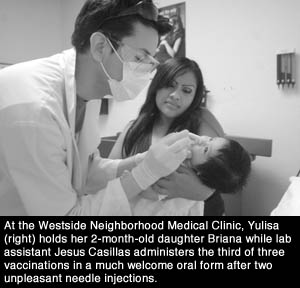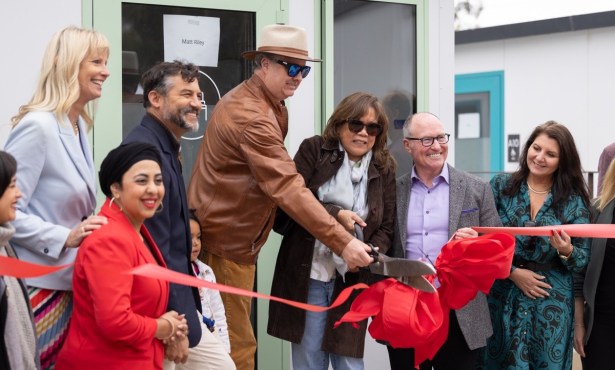Treat the Children Well
County Tackles Record Numbers of Uninsured Children
When it comes to uninsured children, Santa Barbara County stands out. Currently, our county is second only to Shasta for the highest percentage of children without health insurance in the state. And according to UCLA’s Center for Health Policy Research, Santa Barbara and Imperial counties were tied for second place in 2005, with 14.1 percent of their minor populations-or about 16,000 Santa Barbara kids-lacking coverage. As bad as that percentage is, it’s an improvement over 2001, when UCLA found 20 percent of Santa Barbara County’s children were uninsured-the highest percentage of any county in the Golden State that year.

At the Board of Supervisors’ meeting on March 13, 1st District Supervisor Salud Carbajal and 5th District Supervisor Joe Centeno offered up a plan to bring these numbers down, albeit incrementally. Most of their colleagues liked the proposal enough to ask County Executive Officer Mike Brown to figure out if there was a million dollars somewhere in next year’s budget to fund it.
Until December 2005, the only publicly funded health insurance programs for poor children in Santa Barbara were Medi-Cal and Healthy Families. But many kids who need coverage don’t qualify. Medi-Cal is available only to children of families earning less than the federal poverty level, or $17,170 for a family of three; Healthy Families is restricted to children of families making less than 250 percent of the poverty level, or $41,500 for a family of three. Financed by the state and federal governments, both plans require proof of citizenship.
Employed in the growing service industry and the large agricultural sector, a substantial number of Santa Barbara parents hold jobs that don’t provide dependent health insurance, if they provide insurance at all. Twenty-seven-year-old Guadalupe (who didn’t want to give her last name) falls into this category. She came to the United States in 2002 with her husband and four children because they couldn’t make a living in Mexico. She lives in the North County city bearing her name, works in a cooling plant packaging vegetables, and earns between $750 and $1,000 a month. If it weren’t for a weekly Catholic Worker clinic, where volunteer physicians provide free care and medicine to uninsured city residents every Thursday night, Guadalupe would have to pay cash for her asthmatic son’s doctor visits and medicine-cash she rarely has.
Centeno and Carbajal want to expand a program modeled on an initiative Santa Clara County started seven years ago, when its numbers of uninsured kids were inching up toward Santa Barbara levels. Called the Children’s Health Initiative (CHI) or Healthy Kids insurance, Santa Barbara’s program targets families earning between 250 and 300 percent of poverty level and disregards residency status. Representatives from Santa Barbara County’s First 5 Commission and the KIDS Network, among other groups, launched it just over a year ago. Five hundred children have been enrolled, but there’s a growing waiting list.
Officials at the Regional Health Authority say $1 million would give 1,615 additional uninsured kids reliable access to the healthcare system. Ironically, 60 percent of them would end up getting Medi-Cal or Healthy Families because the outreach required to find children who qualify for CHI nets even more kids who qualify for the other two. “It’s a good return on the dollar,” said the Health Authority’s Bob Freeman. But next year’s budget is tight, Deputy County Executive Officer Jim Laponis said, adding that didn’t necessarily mean something would be cut to fund CHI.
In addition to requesting $1 million for the next fiscal year, Carbajal and Centeno hope the supervisors will increase funding for Healthy Kids by $1.5 million a year for the next five years. The board has conceptually approved the proposal, which would potentially extend insurance to 80 percent of the uninsured children here. If Governor Schwarzenegger’s plan to cover all children regardless of citizenship status passes, then the county would be off the hook, Carbajal said. “But we don’t want to wait for the state or federal government,” he added.
Third District Supervisor Brooks Firestone cast the lone opposition vote, lamenting the county was committing to a new entitlement program. Centeno fired back, “This is not an entitlement program by any stretch of the imagination.”


